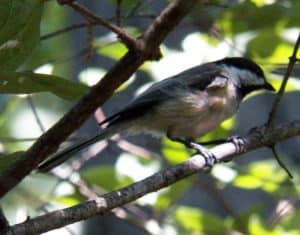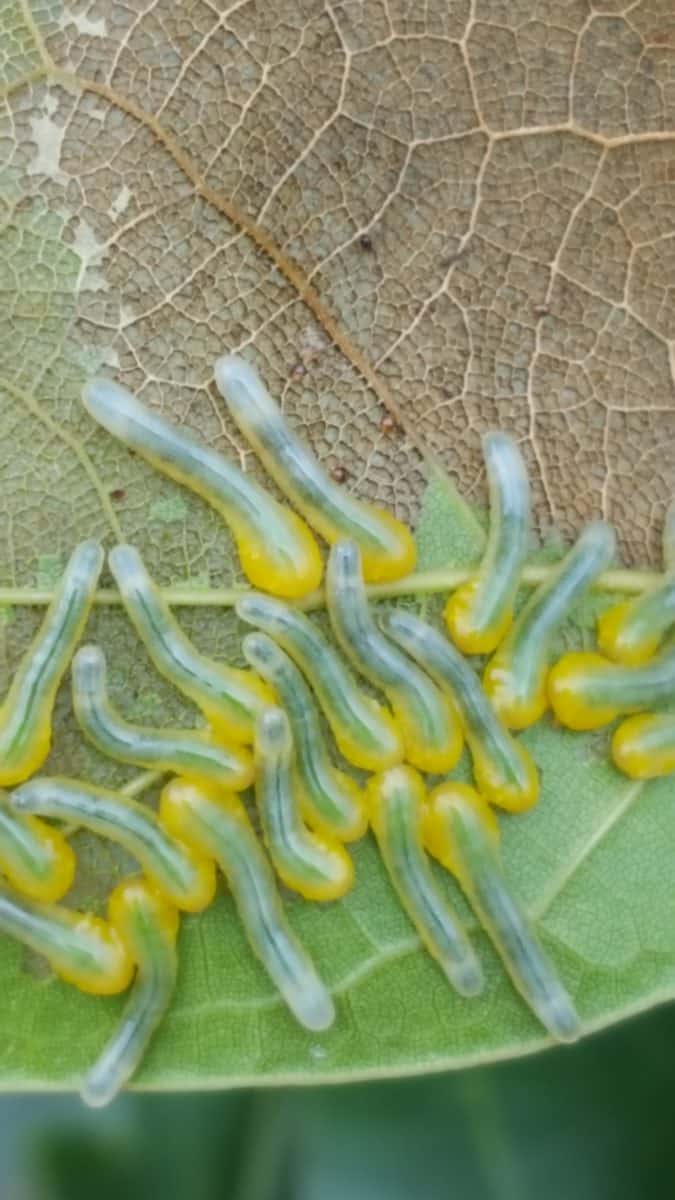It is very interesting how insects, birds, and plants can coexist naturally and amazingly, without killing each other off the planet entirely. Insects are around us, literally everywhere. While I can generally identify some 50 species of insects or more, there are another 200 lurking in my backyard I have no idea about, and another 10,000+ around North America. And that is just species diversity, not to mention the sheer number of actual individual insects. In my yard alone I found 40 monarch caterpillars across 15 milkweed plants-yikes!
While there are much fewer bird species on the planet and in Kansas alone where I live, they have a habit of eating insects. In the winter I feed the birds both to see the diversity in birds I have and to keep their populations numbers up when insects are not an available menu item. I have as many 30 species of birds visit my feeders, and a majority of them are year-round dwellers on my property, who feed on insects in the summer months. Caterpillars are by far the favorite food of many birds, from Northern flickers to chickadees to bluebirds. While walking and taking in the sights of my property, I am excited to observe the numbers of caterpillars on trees and shrubs that are available to the birds.

Now for the plants, I have documented and photographed some 75 native and non-native woody plants throughout my 5 acres. There are also another 100+ species of perennial and annual forbs, both existing and added. Among these, there are 6 species of milkweed, 15 species of grass, and 30 native wildflowers. Insects of all types and varieties feed and raise their young on this diversified landscape, and the birds enjoy the trees and shrubs for both food and nesting sites. Here is the breakdown, plants grow, insects eat plants, and birds eat insects.
Without the birds, one would expect insects to completely eat away the plants. And in some cases, they do. With my milkweed collection, the monarchs, which are colored with warning patterns of black, yellow, and orange, they completely eat whole plants. Monarchs, differing greatly from other butterflies, have strong chemicals in their body making them taste bad to other insects and more importantly, birds.

If you are planting and growing your landscape for pollinators aka bees and butterflies, then you need to be prepared for the onslaught of caterpillars feeding on the plants. We see many questions come up on what to grow to attract pollinators, but people want to see butterflies and bees visiting, not the damage put on by the caterpillars and nymphs of the insects. In an open landscape, with few trees and shrubs, usually found in newer sub-divisions or the middle of old cornfields, it is unlikely to have the birds to keep the insects in check. While there are ground nesting and prairie birds that live among the grasslands, they are not found near croplands and areas of large, mowed grass. People put up bird feeders and see high numbers of finches, sparrows, and cardinals, which are not big insect eaters.
To remedy this problem, one should plant large shade trees with islands and pocket of shrubs that produce berries and provide food source for the insects. There are many trees and shrubs in the nursery trade; you can easily become overwhelmed by their number and cultivar. However, if you want a truly diverse landscape, with nectar sources for pollinators and habitat for birds, ask for trees and shrubs best for pollinators.
Diversity is the key, and removing large areas of turf or mowed ground for prairiescapes and landscape beds. If you are starting with nothing, add large and medium sized trees and shrubs with beds underneath, mulched or added in groundcover, with intent to add perennials later on. Annuals can also be added in in between for pollinators. Choose plants that are better for pollinators such as Verbena bonariensis or Helenium ‘Dakota Gold’. Herbs that are left to flower are also great for pollinators and insects.
Once your trees are established, add in your perennials and build your landscape to include great swaths of plants for pollinators. The insects will come, then the birds, and then the joy of finding caterpillars under a leaf, the sighting of a rare Carolina wren in Kansas, or the pure joy of realizing how much fun it is to walk through your property and see all these things working together.





Hi Doug! David Meister took me to Sycamore Springs to see if it was as he remembered many years ago. The resort still there, springs found easily and one awesome Sycamore tree near the smaller spring. Reminded me of your search for really large old healthy trees. there is still a campground and old church that can be visited. I could spend a week there! Did you ever receive the pictures of my HUGE Knock-out Rosebushes?